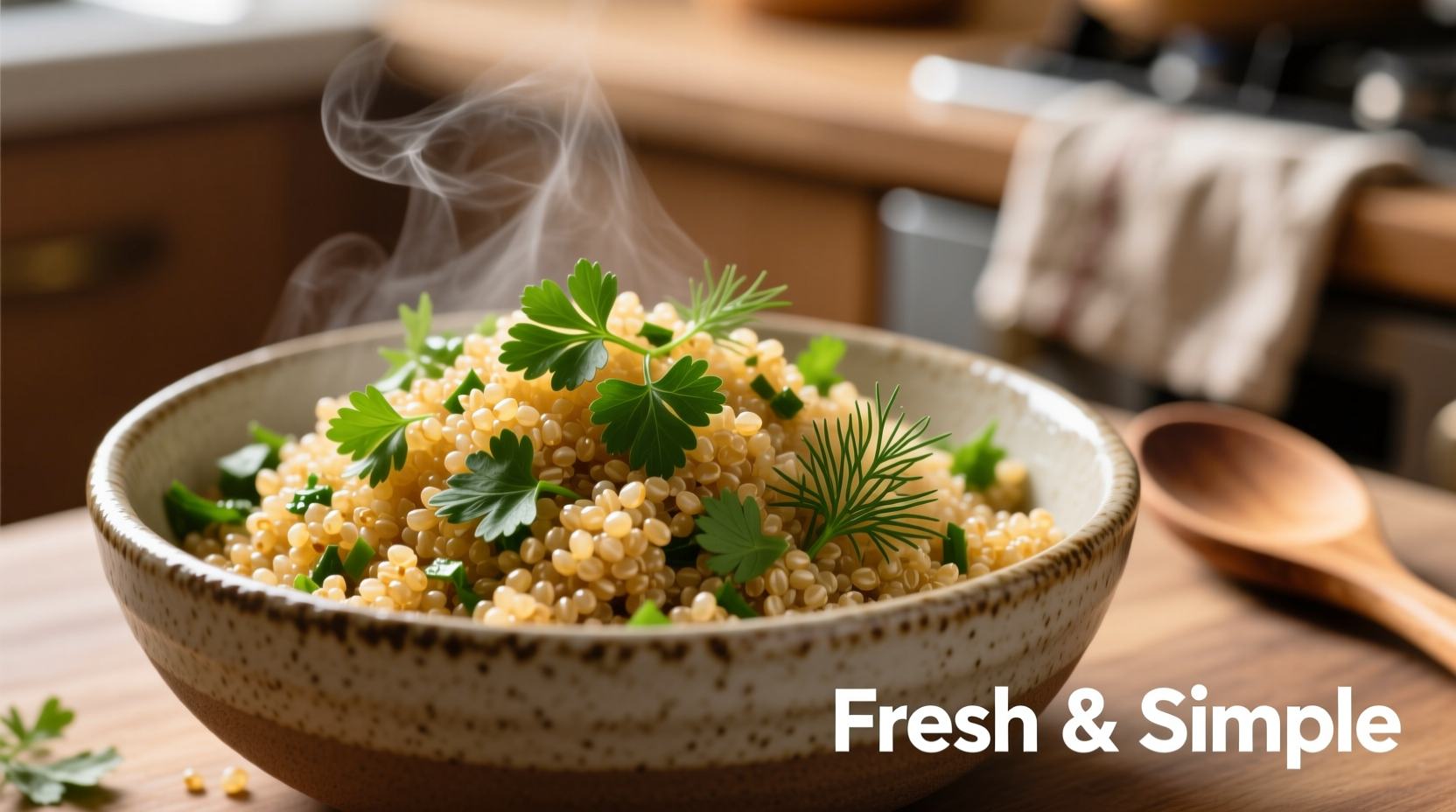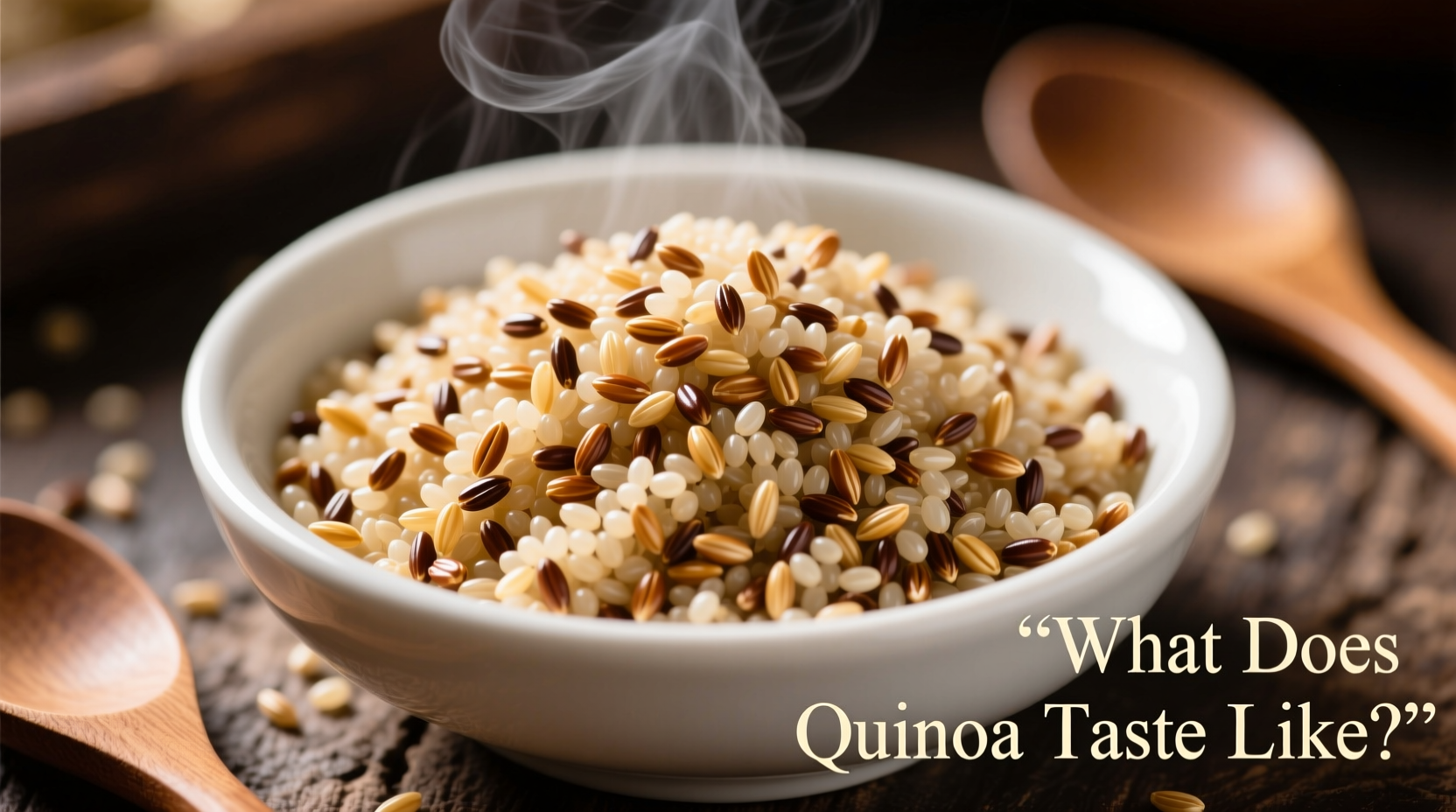Understanding Quinoa's Distinct Flavor Profile
Many first-time quinoa eaters are surprised by its delicate yet distinctive taste. Unlike bland staples like white rice, quinoa delivers a nuanced flavor experience that forms the perfect canvas for both savory and sweet dishes. The key characteristics include:
- Nutty undertones – Comparable to sesame or sunflower seeds
- Earthy base notes – Similar to wild rice but less intense
- Subtle grassiness – Reminiscent of fresh-cut hay (more pronounced in black quinoa)
- Light peppery finish – A clean aftertaste that doesn't linger
What most influences quinoa's taste is proper preparation. The natural coating of saponins—a soapy-tasting compound that protects the seeds in nature—must be thoroughly rinsed away. This explains why poorly prepared quinoa often tastes bitter or soapy to newcomers.
How Quinoa Varieties Affect Taste
Not all quinoa tastes the same. The three primary varieties offer distinct flavor experiences that impact recipe success:
| Variety | Flavor Profile | Best Culinary Uses |
|---|---|---|
| White Quinoa | Mildest, slightly sweet, delicate nuttiness | Salads, breakfast bowls, side dishes |
| Red Quinoa | Earthier, heartier, with subtle berry notes | Heartier salads, grain bowls, stuffed vegetables |
| Black Quinoa | Most robust, sweet-earthy with grassy undertones | Cold salads, colorful grain mixes, visual contrast |
According to research from the USDA Agricultural Research Service, these flavor differences stem from varying concentrations of flavonoids and saponins in each variety. Black quinoa contains 15-20% more natural antioxidants than white varieties, contributing to its slightly more complex taste profile.
Why Your Quinoa Might Taste Bitter (And How to Fix It)
The most common quinoa taste complaint—bitterness—typically results from inadequate rinsing. Saponins, while harmless, create an unpleasant soapy flavor when not properly removed. Here's how to ensure perfect taste every time:
The Essential Rinsing Technique
- Place quinoa in a fine-mesh strainer
- Rub grains gently under cold running water for 2-3 minutes
- Continue until water runs completely clear (not cloudy)
- Drain thoroughly before cooking
Food science research from Cornell University's Food Science Department confirms that proper rinsing removes 90-95% of surface saponins, dramatically improving flavor without compromising nutritional value.
Cooking Methods That Enhance Quinoa's Natural Flavor
How you cook quinoa significantly impacts its final taste. Professional chefs use these techniques to maximize flavor:
Dry-Toasting Before Cooking
"Toasting quinoa in a dry pan for 3-5 minutes before adding liquid develops deeper nutty flavors through the Maillard reaction," explains Maya Gonzalez, Latin American cuisine specialist. "This simple step transforms quinoa from bland to extraordinary."
Flavor-Infused Cooking Liquid
- Replace water with vegetable or chicken broth
- Add citrus zest (lemon or orange) to cooking water
- Include aromatic herbs like thyme or rosemary
- Try a splash of apple cider vinegar (1 tsp per cup of quinoa)
Quinoa vs. Other Grains: A Flavor Comparison
Understanding how quinoa's taste compares to familiar grains helps set proper expectations:
- Quinoa vs. Rice: Quinoa has more complex flavor than white rice but less intense than brown rice. Its texture is lighter with a slight pop.
- Quinoa vs. Couscous: Couscous tastes neutral and pasta-like, while quinoa offers distinct nuttiness and earthiness.
- Quinoa vs. Oats: Both have nutty notes, but quinoa is less sweet with a cleaner finish.
Perfect Pairings: Ingredients That Complement Quinoa's Taste
Quinoa's mild yet distinctive flavor makes it incredibly versatile. These combinations consistently deliver exceptional results:
Savory Combinations
- Lemon-tahini dressing with roasted vegetables
- Feta cheese, cherry tomatoes, and cucumber
- Avocado, black beans, and corn with lime juice
Sweet Applications
- Cooked with coconut milk and cinnamon
- With fresh berries and a drizzle of honey
- As a base for breakfast bowls with nuts and dried fruit

Troubleshooting Common Quinoa Taste Issues
Even with proper preparation, quinoa can sometimes disappoint. Here's how to fix common problems:
"My quinoa tastes soapy!"
This indicates incomplete saponin removal. Next time, try soaking quinoa in water for 15 minutes before rinsing, or rub grains vigorously between your palms during rinsing.
"Quinoa tastes too bland"
Boost flavor by cooking with aromatics: add a smashed garlic clove, bay leaf, or strip of lemon zest to the cooking liquid. Season with salt after cooking for maximum flavor impact.
"Why does my quinoa have a grassy taste?"
Black quinoa naturally has more pronounced grassy notes. If undesirable, try white quinoa instead, or add a splash of acid (lemon juice or vinegar) to balance the flavor.
Final Thoughts on Quinoa's Versatile Flavor
When properly prepared, quinoa offers a uniquely satisfying taste experience—nutty yet light, earthy but not heavy, with a pleasant texture that holds up in diverse dishes. Its mild flavor profile makes it incredibly adaptable, serving equally well as a savory side dish or sweet breakfast option. By understanding what influences quinoa's taste and implementing these preparation techniques, you'll consistently enjoy its delicate, nuanced flavor that has made it a global superfood staple.











 浙公网安备
33010002000092号
浙公网安备
33010002000092号 浙B2-20120091-4
浙B2-20120091-4